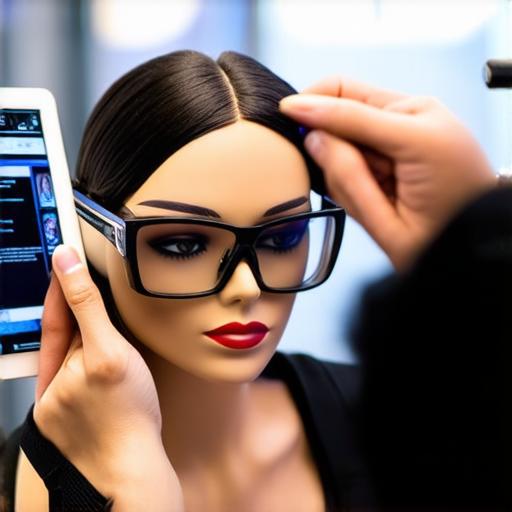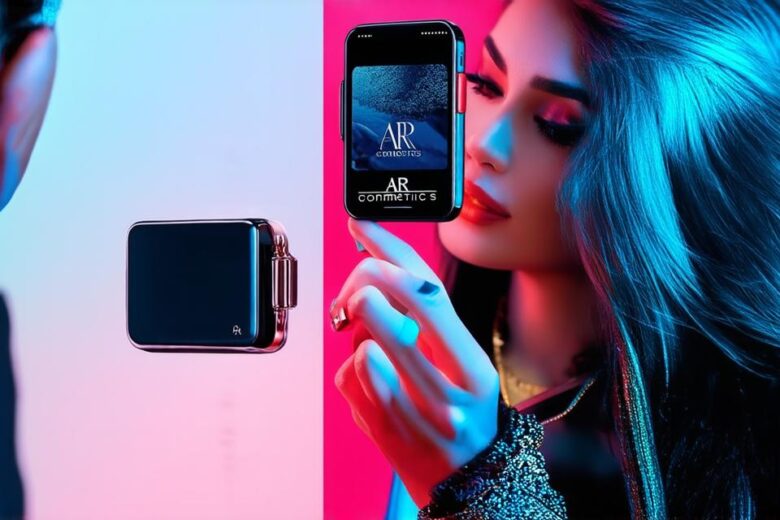
Introduction:
The beauty industry is constantly evolving to keep up with changing consumer preferences and technological advancements. One such technology that has gained significant attention in recent years is augmented reality (AR). AR technology allows consumers to experience products and services in a more interactive and immersive way, making it an ideal solution for the beauty industry. In this article, we will explore how the beauty industry is using AR to enhance the customer experience and drive sales.
AR in Beauty Retail:
AR has revolutionized the beauty retail experience by providing consumers with a more personalized and interactive shopping journey. Beauty retailers are using AR technology to enable customers to try on makeup, visualize haircuts, and even see how furniture would look in their home before making a purchase. This not only enhances the customer experience but also reduces the need for physical product samples, thereby reducing waste and costs.
One such example is Sephora’s Virtual Artist Experience, which uses AR technology to provide customers with personalized makeup consultations. Customers can try on makeup in real-time using their smartphone camera and receive immediate feedback from a virtual assistant. This not only saves time but also eliminates the need for physical product samples, resulting in a more sustainable retail experience.
AR in Beauty Brands:
Beauty brands are also leveraging AR technology to enhance the customer experience and drive sales. One such example is L’Oreal’s AR-enabled smart mirror, which allows customers to try on makeup and see how it looks on their skin in real-time. The mirror uses facial recognition technology to provide personalized recommendations based on the customer’s skin tone and type.
Another example is Estée Lauder’s AR-powered Try Before You Buy feature, which enables customers to try on lipstick virtually before making a purchase. The feature uses AR technology to overlay the lipstick onto the customer’s lips in real-time, providing a more accurate representation of how the product would look on their skin.
AR in Beauty Education:
AR technology is also being used in beauty education to enhance the learning experience for students and professionals. One such example is the use of AR in cosmetology schools to provide students with a more realistic and interactive learning experience. Students can practice makeup application, hair styling, and other beauty techniques using AR-enabled mannequins, which provide immediate feedback on their performance.
AR in Beauty Advertising:
The beauty industry is also leveraging AR technology in advertising to create more engaging and immersive experiences for consumers. One such example is the use of AR in L’Oreal’s "Nature’s Hair" campaign, which uses AR technology to bring the beauty of nature to life in a virtual setting. Consumers can try on different hairstyles using AR-enabled hairdresser mannequins, providing a more interactive and personalized advertising experience.
Case Study: Sephora’s Virtual Artist Experience
Sephora’s Virtual Artist Experience is a prime example of how the beauty industry is using AR to enhance the customer experience. The experience uses AR technology to provide customers with personalized makeup consultations, enabling them to try on makeup in real-time using their smartphone camera. The virtual assistant provides immediate feedback on the customer’s skin tone and type, ensuring that they receive the best possible product recommendations.
The experience has been a huge success for Sephora, with over 10 million virtual consultations conducted globally since its launch in 2016. The experience not only enhances the customer experience but also reduces the need for physical product samples, resulting in a more sustainable retail experience.
Expert Opinions:
"AR technology has revolutionized the beauty industry by providing consumers with a more personalized and interactive shopping journey," says Samantha Ravndahl, Chief Marketing Officer at Sephora. "The Virtual Artist Experience has been a game-changer for us, enabling us to provide customers with the best possible product recommendations while reducing waste and costs."
